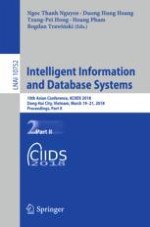2018 | OriginalPaper | Buchkapitel
Rules Determine Therapy-Dependent Relationship in Symptoms Development of Parkinson’s Disease Patients
verfasst von : Andrzej W. Przybyszewski, Stanisław Szlufik, Piotr Habela, Dariusz M. Koziorowski
Erschienen in: Intelligent Information and Database Systems
Aktivieren Sie unsere intelligente Suche, um passende Fachinhalte oder Patente zu finden.
Wählen Sie Textabschnitte aus um mit Künstlicher Intelligenz passenden Patente zu finden. powered by
Markieren Sie Textabschnitte, um KI-gestützt weitere passende Inhalte zu finden. powered by
